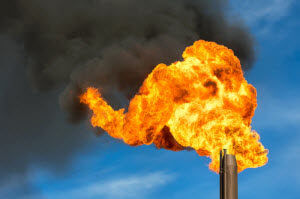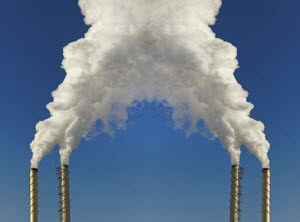New Regulations for Methane Emissions from Gas and Oil Industries
The Obama administration has announced plans to regulate methane emissions in oil and gas industries for the first time, according to a recent press release from the Environmental Protection Agency (EPA). It stated that new rules and regulations will address methane emissions in the gas and oil industry.
But what exactly does this mean? Read on to find out.
About the EPA’s New Regulations
 The EPA’s new rules will target both new and existing sources in the gas and oil industries. They will finalize a set of standards that will help to reduce a number of harmful pollutant emissions, especially methane, in new, modified, or reconstructed sources.
The EPA’s new rules will target both new and existing sources in the gas and oil industries. They will finalize a set of standards that will help to reduce a number of harmful pollutant emissions, especially methane, in new, modified, or reconstructed sources.
Methane is one of the key components of natural gas and considered a potent greenhouse gas. It also makes up nearly one-third of the emissions coming from oil production as well as the production, transmission, and distribution of natural gas. According to the EPA, it has 25 times more global warming potential than carbon dioxide.
The EPA also states that they will issue an information collection request (ICR) to existing sources. This will legally require oil and gas companies to provide the information needed to control emissions.
These regulations are part of President Obama’s Climate Action Plan and will help the administration achieve its goal of reducing methane emissions from oil and gas companies by up to 45% from 2012 levels by 2025.
Industry Opinions on Regulations

For the most part, oil and gas companies had negative reactions to the EPA’s recent regulations. In a Washington Post article, Kyle Isakower, the American Petroleum Institute’s (API) vice president for regulatory and economic policy, said, “It doesn’t make sense that the administration would add unreasonable and overly burdensome regulations when the industry is already leading the way in reducing emissions.”
He also mentioned that these new regulations address the high emissions many companies are already trying to reduce and that they could pose more issues in the future. “Natural gas is a proven source of clean, affordable, and reliable energy. The development and use of natural gas from shale has helped the U.S. lead the world in cutting power sector carbon emissions, which are near 20-year lows,” Isakower said in a recent API press release. “The last thing we need is more duplicative and costly regulation that could discourage natural gas production, disrupt our progress reducing emissions, and increase the cost of energy for American consumers.”
Other companies, like the Natural Gas Supply Association, also don’t agree with these new standards. However, they will comply to further help reduce emissions. “EPA is taking a misguided approach to reducing methane emissions from natural gas systems, our companies take all compliance obligations seriously,” the company said in a statement. “Our industry is wholeheartedly committed to continued reductions of methane emissions, as our record has demonstrated continuously for the past 25 years.”
Benefits Will Outweigh the Negatives
While some companies oppose the EPA’s new regulations, the Obama administration states that the long-term benefits of these rules will outweigh the short-term drawbacks.
The finalized standards are expected to cut 510,000 short tons of methane by 2025. This is equal to 11 million metric tons of carbon dioxide. On top of that, the EPA predicts that these policies will yield climate benefits of $690 million by 2025, outweighing the projected costs of $530 million.
In addition, EPA Administrator Gina McCarthy said these new rules are expected to ensure cleaner air and a healthier population. “Together these new actions will protect public health and reduce pollution linked to cancer and other serious health effects while allowing industry to continue to grow and provide a vital source of energy for Americans across the country.”
At CPV Manufacturing, we understand how important it is to control fugitive emissions. This is why our shutoff and control valves are compliant with the highest fugitive emission standards and designed to deliver safer operation and cleaner air.
For more information about our valves, fittings, and other products, contact CPV Manufacturing.

